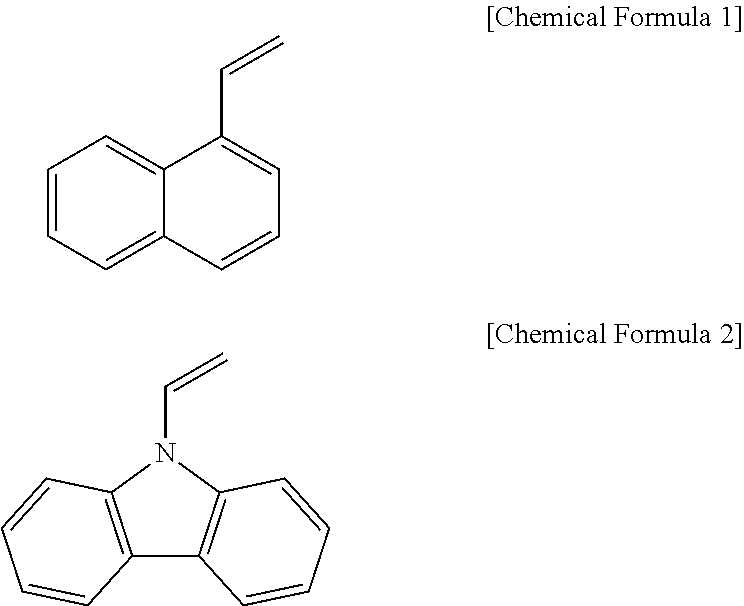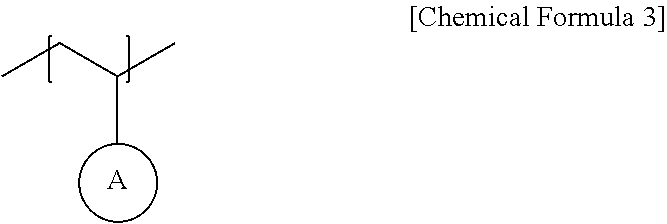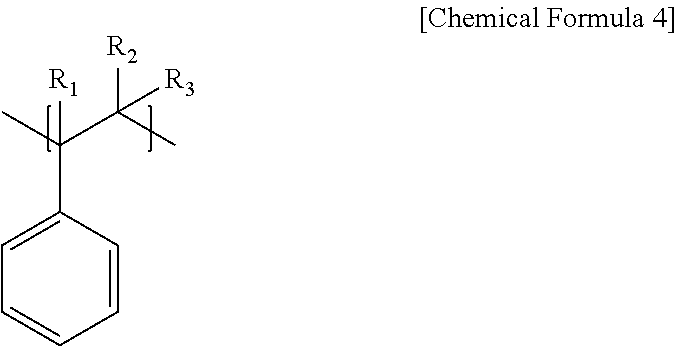Resin composition and optical film including the same and having reverse wavelength dispersion characteristics
- Summary
- Abstract
- Description
- Claims
- Application Information
AI Technical Summary
Benefits of technology
Problems solved by technology
Method used
Image
Examples
##ventive example 1
Inventive Example 1
[0061]Resin was manufactured by copolymerizing 8 parts by weight of vinylnaphthalene, 22 parts by weight of maleic anhydride, 20 parts by weight of styrene, and 50 parts by weight of methylmethacrylate. The manufactured copolymer had a weight average molecular weight of 120,000 and a glass transition temperature thereof was 136° C.
[0062]Then, after a non-stretched film having a width of 1500 nm was fabricated using the resin with a T-die film-forming apparatus under conditions of 250° C. and 250 rpm, the film was uniaxially stretched in a TD direction at the glass transition temperature and a retardation value of the film was measured. In this case, a haze value of the film was 0.2.
##ventive example 2
Inventive Example 2
[0063]Resin was manufactured by copolymerizing 10 parts by weight of vinylnaphthalene, 25 parts by weight of maleic anhydride, 20 parts by weight of styrene, and 45 parts by weight of methylmethacrylate. The manufactured copolymer had a weight average molecular weight of 120,000 and a glass transition temperature thereof was 141° C.
[0064]Then, after a non-stretched film having a width of 1500 nm was fabricated using the resin with a T-die film-forming apparatus under conditions of 280° C. and 250 rpm, the film was uniaxially stretched in a TD direction at the glass transition temperature and a retardation value of the film was measured. In this case, a haze value of the film was 0.2.
##ventive example 3
Inventive Example 3
[0065]Resin was manufactured by copolymerizing 10 parts by weight of vinylnaphthalene, 25 parts by weight of maleic anhydride, 30 parts by weight of styrene, and 35 parts by weight of methylmethacrylate. The manufactured copolymer had a weight average molecular weight of 120,000 and a glass transition temperature thereof was 135° C.
[0066]Then, after a non-stretched film having a width of 1500 nm was fabricated using the resin with a T-die film-forming apparatus under conditions of 250° C. and 250 rpm, the film was uniaxially stretched in a TD direction at the glass transition temperature and a retardation value of the film was measured. In this case, a haze value of the film was 0.2.
PUM
| Property | Measurement | Unit |
|---|---|---|
| Percent by mass | aaaaa | aaaaa |
| Percent by mass | aaaaa | aaaaa |
| Percent by mass | aaaaa | aaaaa |
Abstract
Description
Claims
Application Information
 Login to View More
Login to View More - R&D
- Intellectual Property
- Life Sciences
- Materials
- Tech Scout
- Unparalleled Data Quality
- Higher Quality Content
- 60% Fewer Hallucinations
Browse by: Latest US Patents, China's latest patents, Technical Efficacy Thesaurus, Application Domain, Technology Topic, Popular Technical Reports.
© 2025 PatSnap. All rights reserved.Legal|Privacy policy|Modern Slavery Act Transparency Statement|Sitemap|About US| Contact US: help@patsnap.com



